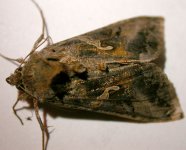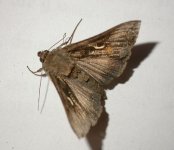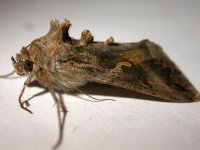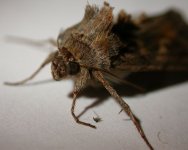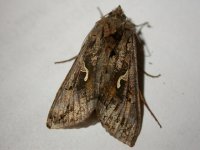Reader
Well-known member
I brought this indoors after finding it hanging from one of our flower baskets. It looked to be about two thirds the normal size of the Silver y's that I see every night. I also had the feeling that there were other differences but couldn't put my finger on what they were. Without having any other Silver Y's to compare it to I thought it best to put it into the Forum.
I do think it is a Silver Y but I would like to think that I am wrong and it is something different.
I do think it is a Silver Y but I would like to think that I am wrong and it is something different.




